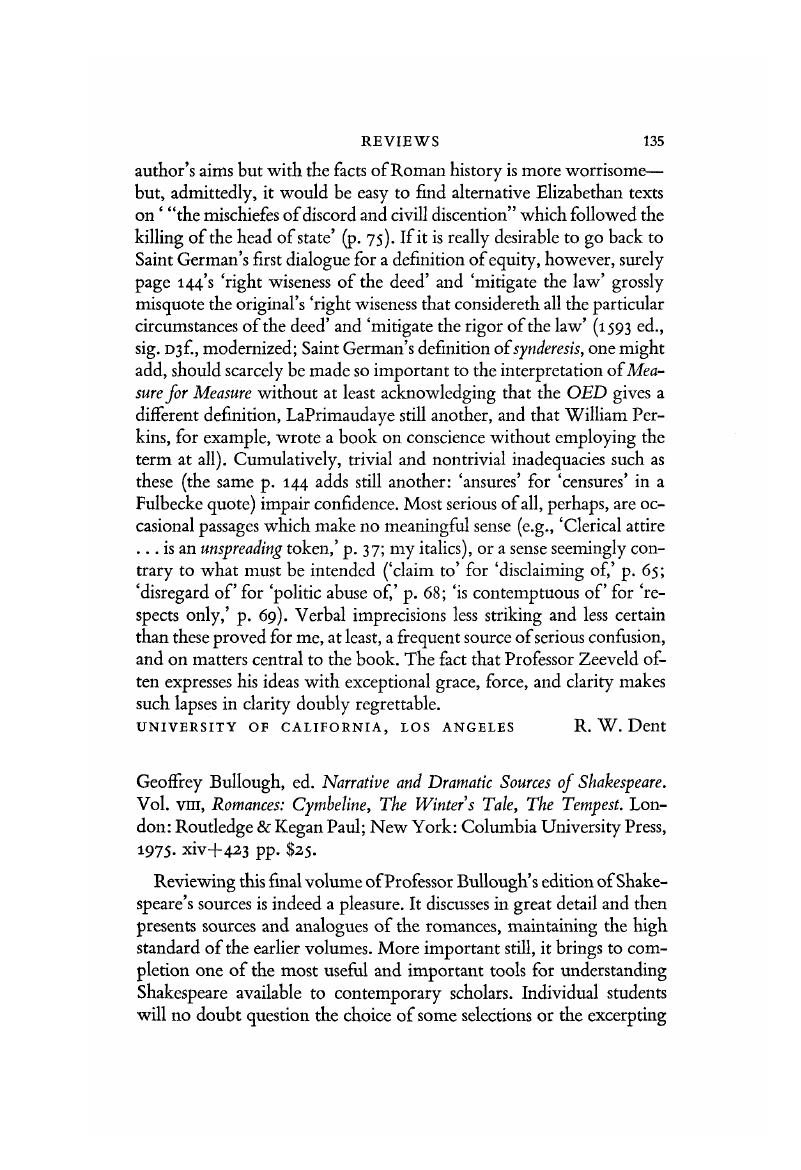No CrossRef data available.
Published online by Cambridge University Press: 20 November 2018

1 Comparison of the second source for Cymbeline (pp. 46-50) with my own 1587 Holinshed reveals only two errors, both on p. 49: substitution of ‘this’ for ‘his’ (line 15) and addition of a comma (line 25). The former is the only error noted that changes a word. The fresh page references at the beginning of the second and third paragraphs are surely confusing in that they imply excerpting, especially since they are omitted thereafter; but the entire passage, including the first three paragraphs, is in fact continuous. On the other hand, checking a section of Greene's Pandosto (p. 160, ‘Ah Franion,’ to p. 162 top) against the Huntington Library facsimile of the Folger copy that Bullough used revealed thirteen discrepancies, all involving single letters or addition or omission of commas. The first paragraph of William Strachey's ‘True Reportory’ (pp. 275-276) has four divergences in punctuation from the Huntington Library copy of the 1625 Purchas his Pilgrimes, suppresses four uses of italics, and starts a new sentence after the indicated omission where the original reads ‘… , as now we,’ continuing the sentence omitted in part. The next two paragraphs (pp. 276-277) are exact. The shifting of commas here (and in Pandosto) cannot be attributed to unconscious modernization, since two of the omitted commas set off nonrestrictive clauses where modern usage requires a comma. The most serious error encountered is, however, the reference in the first footnote to ‘Purchas his Pilgrimes, Pt. II, Bk. x, 1625.’ The correct reference would be to Part rv, Book ix, Chapter vi, page 1734. This error is puzzling. For example, both the DNB in its article on William Strachey and E. K. Chambers on The Tempest (William Shakespeare, 1, 492) refer correctly to iv, 1734.